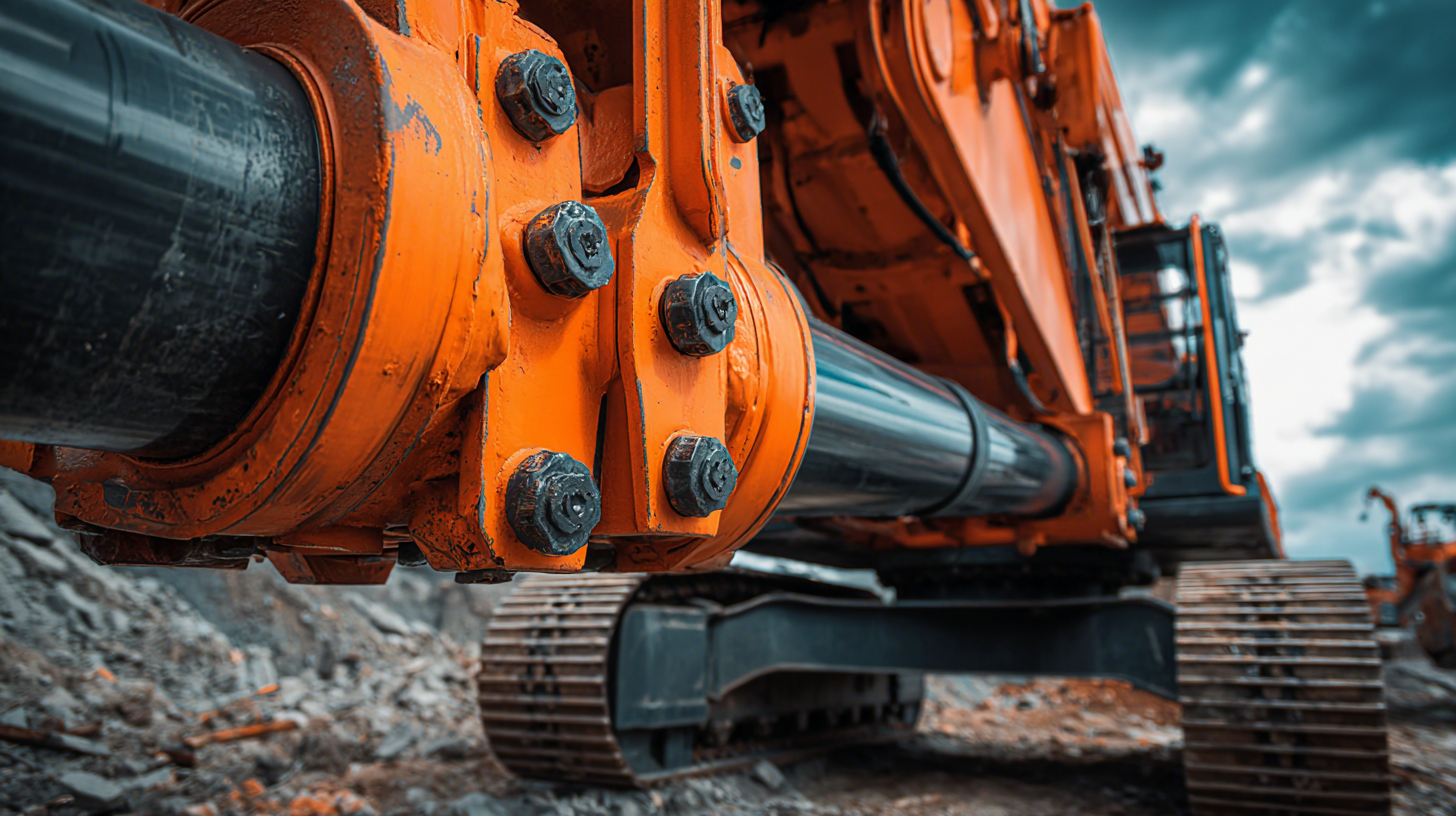 +86 13794985240
+86 13794985240
Leave Your Message
-
 CONTACT NUMBER
CONTACT NUMBER -
 CONTACT NUMBER
CONTACT NUMBER -
 CONTACT NUMBER
CONTACT NUMBER



When it comes to heavy equipment, selecting the right boom cylinder is crucial for maximizing performance and ensuring safety. According to a recent industry report by ResearchAndMarkets, the global market for hydraulic cylinders is anticipated to reach $18 billion by 2025, with boom cylinders playing a significant role in this growth due to their wide applications in construction, mining, and material handling. With an array of specifications, including bore size, stroke length, and operational pressure ratings, understanding the nuanced technical parameters of boom cylinders can greatly influence equipment efficiency and longevity. As industries continually strive for improved productivity and reduced downtime, this ultimate guide serves to navigate the complexities of choosing the best boom cylinder tailored for your heavy equipment needs.

When selecting the best boom cylinder for your heavy equipment, understanding its essential features is crucial to ensuring optimal performance and reliability. One of the primary considerations is the cylinder length and stroke. The right length will provide the necessary reach for your specific applications, whether it’s for excavators, cranes, or telehandlers. Additionally, the stroke length impacts the range of motion and the force the cylinder can exert, so assessing the operational needs of your equipment is vital.

Another important feature is the construction material of the boom cylinder. High-quality materials, suchspan style="color: #ff6600; text-decoration: underline;"> such as hardened steel or aluminum, can greatly enhance durability and resistance to wear and tear. It’s essential to choose cylinders with corrosion-resistant coatings, especially for outdoor operations where exposure to harsh weather conditions is common. Furthermore, checking the seal design and type is critical, as high-quality seals prevent fluid leaks and ensure smooth operation, ultimately extending the lifespan of the cylinder. By focusing on these essential features, you can confidently choose a boom cylinder that meets your heavy equipment needs.
Choosing a boom cylinder for heavy equipment is not just about matching specifications; it also significantly ties into the importance of industry certification. In the realm of heavy industry, where machinery operates under extreme conditions and stakes are high, certified components ensure that performance and safety standards are met. Industry certifications act as a benchmark, assuring users that the components have undergone rigorous testing and adhere to established quality protocols.
As the construction equipment landscape evolves amidst trends like the shift towards equipment-as-a-service and the increasing application of advanced manufacturing techniques, the value of reliable parts becomes even more pronounced. Companies facing staffing shortages in skilled labor need to rely on certified components to minimize equipment downtimes and enhance operational efficiency. With innovations in virtual reality simulators for operator training, the demand for high-quality, certified boom cylinders is set to grow, ensuring that operators are equipped with the best tools, ultimately influences performance and safety on the job site.
When selecting a boom cylinder for heavy equipment, it's essential to consider not only the technical specifications but also the export and import regulations that may affect your choices. Many countries enforce strict guidelines regarding the materials used, manufacturing processes, and overall safety standards of hydraulic components. Understanding these regulations can prevent delays in shipping and ensure compliance with local laws.
**Tips for Compliance**: Always check the import regulations of your destination country. This can include restrictions on certain materials or specifications required to meet safety standards. Engaging with a customs consultant can save time and resources by ensuring that your boom cylinders meet all regulatory requirements before shipment.
Additionally, consider the certifications your boom cylinder must possess. Certain certifications, such as ISO 9001 or CE marking, may be mandatory in specific regions. These certifications not only enhance safety and reliability but also streamline the export process.
**Tips for Certification**: Before purchasing, verify that your supplier holds the necessary certifications. Having verified suppliers can significantly reduce the risk of regulatory issues and facilitate smoother import processes.

When selecting the best boom cylinder for your heavy equipment, assessing compatibility is crucial to ensure optimal performance and longevity. Start by reviewing the specifications of your equipment, including lifting capacity, extension length, and mounting style. Matching these parameters with the boom cylinder's rating will help prevent operational failures and reduce the risk of accidents on the job site.
Another key factor is the hydraulic system's pressure requirements. Each piece of machinery is designed to work within certain pressure limits, which must align with the boom cylinder you are considering. Make sure to also take into account the operating environment, as factors such as temperature and exposure to harsh conditions can affect the durability of the cylinder materials. By doing thorough compatibility checks, you can make an informed choice that enhances the efficiency and safety of your heavy equipment.
When it comes to maximizing the performance of boom cylinders in heavy equipment, proper maintenance is essential. Recent advancements, such as the implementation of positive flow electrohydraulic systems, have demonstrated significant improvements in operational efficiency and power delivery. According to a report from the International Journal of Fluid Mechanics, optimizing hydraulic systems can lead to a 20-30% increase in efficiency, proving that the configuration of hydraulic components is critical for enhancing overall machine performance.
Maintenance of boom cylinders should focus on regular inspections and timely replacements of wear parts. Data from the Machinery Lubrication Society suggest that approximately 30% of hydraulic failures stem from contamination, underscoring the necessity of keeping hydraulic fluids clean and regularly changing them to prolong the life of boom cylinders. Additionally, ensuring that seals and O-rings are in good condition can greatly prevent leaks, which frequently compromise hydraulic systems. Thus, adhering to a proactive maintenance routine not only extends the lifespan of boom cylinders but also ensures optimal performance and reliability in heavy machinery operations.
